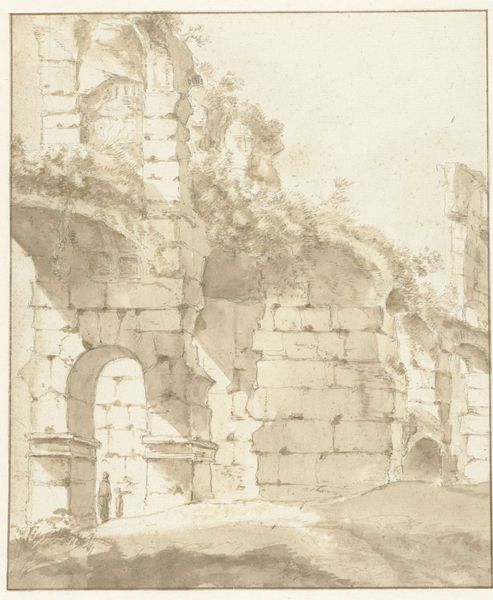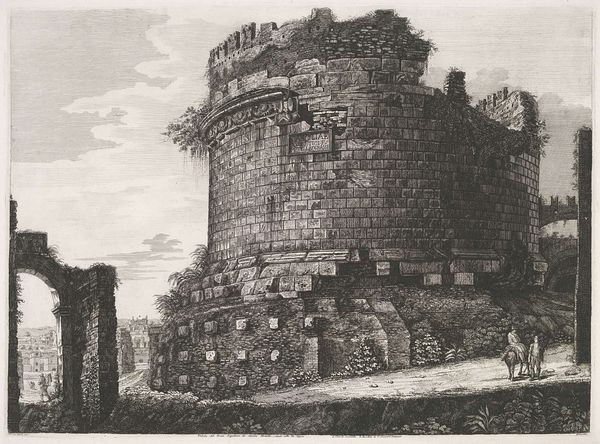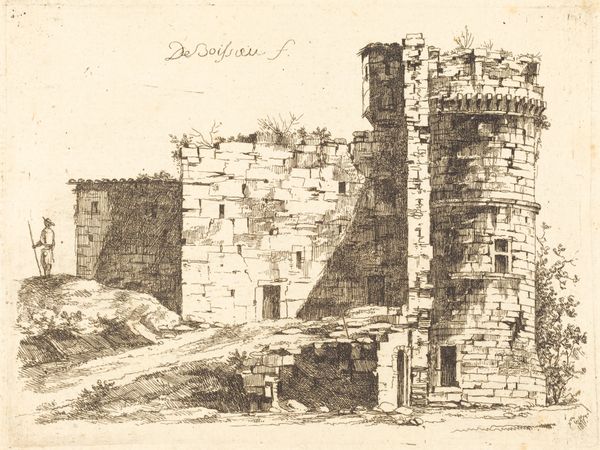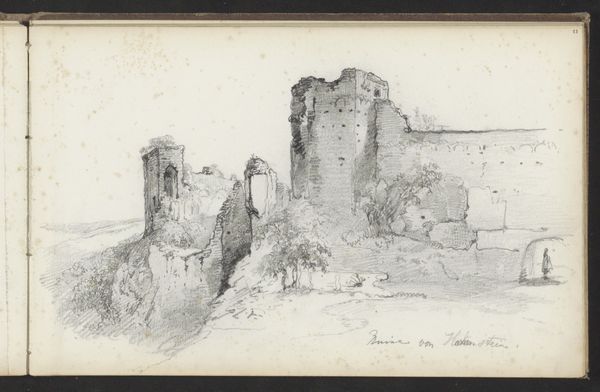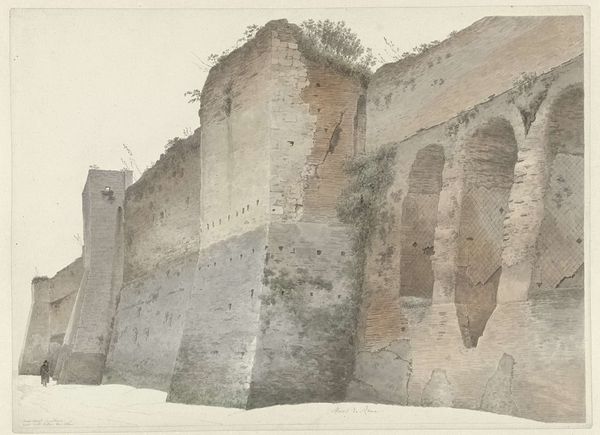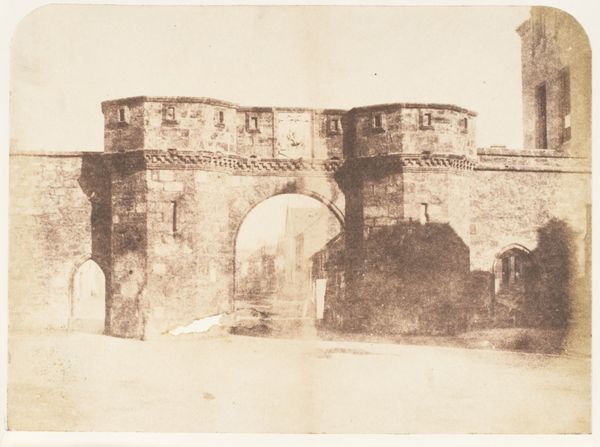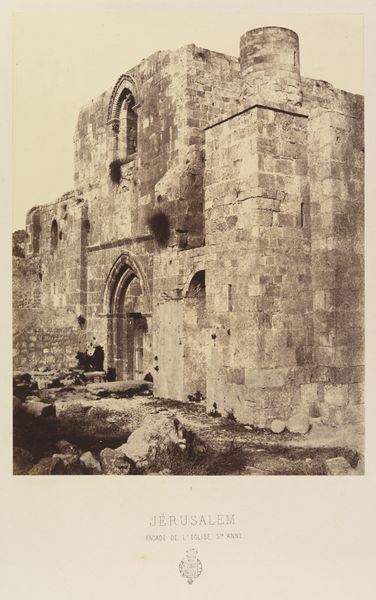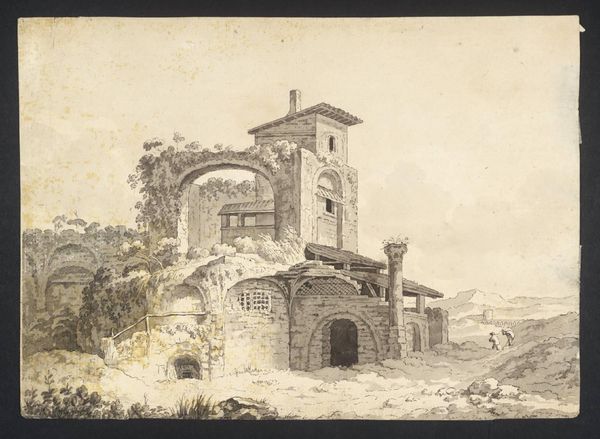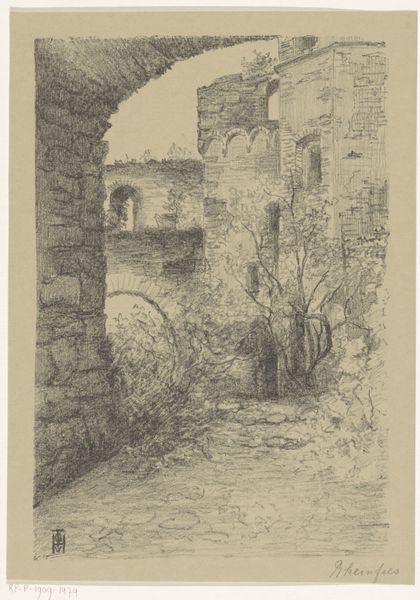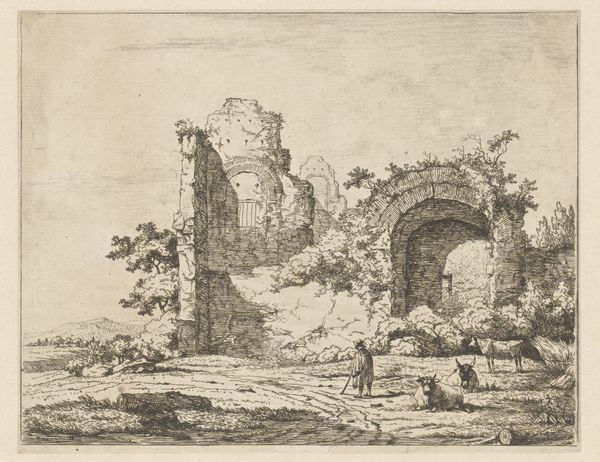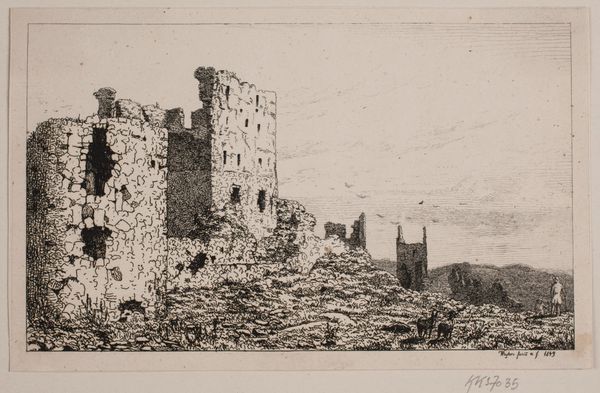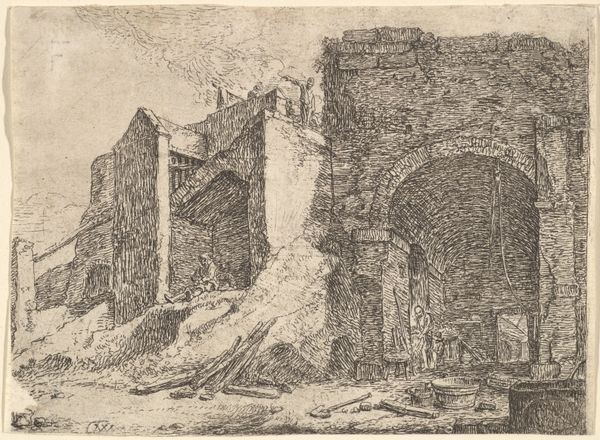
drawing, watercolor, architecture
#
drawing
#
landscape
#
charcoal drawing
#
romanesque
#
watercolor
#
coloured pencil
#
cityscape
#
history-painting
#
watercolor
#
architecture
Copyright: Public Domain: Artvee
Curator: This watercolour and charcoal drawing presents the *Roman Ruins Including an Arched Aqueduct and Tower* crafted by Joseph Wright of Derby, around 1774 to 1775. There’s something incredibly somber in its tones. Editor: Yes, it's almost entirely monochrome, dominated by pale greys and beiges that conjure up a sense of melancholic reflection on vanished grandeur. The structural integrity of the ruins also feels important; each block carefully considered. Curator: The muted palette certainly echoes a world observed through memory, as though Wright wasn't merely depicting ruins but the feeling of ruin itself, or maybe that the grand things are bound to be overgrown... I do like how the vegetation creeps into every cranny. It is like nature taking back what was once hers. Editor: Observe how the aqueduct's arches—rigid, repeated, precise—contrast with the tower's mass, whose very shape seems designed to disrupt geometric predictability! And did you notice how the artist applies value to create a certain hierarchy? The darkest, densest tones bring the crumbling infrastructure to the fore; this helps the lighter zones fall back and create the atmospheric perspective needed to conjure depth within the pictorial field. Curator: I think Derby was completely enthralled with ruins as emblems of a past, especially how history can fade, isn't it? You almost expect to see Shelley wandering in there, musing about Ozymandias, you know. But for me, there's also this palpable tension, a little crack between human endeavor and untamed wilderness. Editor: Wright utilizes linear precision alongside chiaroscuro; a game of edges and blurred forms—which lends his scenes an air of temporal ambiguity. One struggles to categorize the historical moment captured, a layering effect produced through strategic visual interplay, which results in a certain enigmatic reading experience. Curator: So, Derby isn't simply sketching history; he's feeling it, transforming factual observation into a rumination of time, oblivion, you might say... Editor: I concur. The emotional register of decline resonates via considered structural deployments! That formal control is critical, right down to the surface of this beautiful rendering, in grasping the depth of what lies before us.
Comments
No comments
Be the first to comment and join the conversation on the ultimate creative platform.
